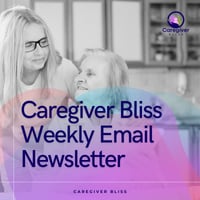As our parents age, it becomes crucial to pay attention to their health in various aspects. One often overlooked aspect is skin health, specifically the risk of skin cancer. Skin cancer is the most common type of cancer globally, and the risk increases with age.
In this article, we'll look at the types of skin cancer, the risk factors associated with elderly individuals, and practical steps to prevent and detect skin cancer in our aging parents.
Types of Skin Cancer
There are three main types of skin cancer:
- Basal cell carcinoma
- Squamous cell carcinoma
- Melanoma
Basal cell carcinoma is the most common and least aggressive, while melanoma is less common but more dangerous. Squamous cell carcinoma falls in between. Elderly individuals are particularly susceptible to these types due to cumulative sun exposure over their lifetime.
Risk Factors for Elderly Individuals
- Cumulative Sun Exposure: Years of exposure to the sun's harmful UV rays contribute to the development of skin cancer.
- Weakened Immune System: Aging weakens the immune system, making it harder for the body to fight off cancer cells.
- Pre-Existing Skin Conditions: Individuals with a history of skin conditions, such as actinic keratosis, are at a higher risk.
- Genetic Factors: A family history of skin cancer can increase the likelihood of developing it.
Prevention Strategies
- Sun Protection: Encourage the use of sunscreen with a high SPF, protective clothing, and wide-brimmed hats when outdoors. Avoid peak sunlight hours.
- Regular Skin Checks: Teach your parents to perform regular self-examinations and report any changes in moles, spots, or skin texture to their healthcare provider.
- Annual Dermatologist Visits: Schedule regular visits to a dermatologist for thorough skin examinations. Early detection significantly improves treatment outcomes.
- Hydration: Adequate hydration supports overall skin health. Dry and damaged skin is more susceptible to cancer.
- Quit Smoking: If applicable, quitting smoking can reduce the risk of squamous cell carcinoma.
Detection and Diagnosis
It's essential to be aware of the warning signs of skin cancer, including changes in the size, shape, or color of moles, the development of new growths, or persistent itching and bleeding. If any of these symptoms arise, seeking prompt medical attention is crucial. Dermatologists may perform biopsies to confirm a diagnosis.
Conclusion
As caregivers and responsible individuals, we have to prioritize the health and well-being of our aging parents. Skin cancer is a prevalent concern in the elderly population, but with proactive measures and regular monitoring, we can significantly reduce the risk and ensure early detection for timely intervention.
We hope this article has shed light on the importance of skin cancer awareness and prevention in elderly parents. Your thoughts and experiences are invaluable to us – please share them in the comments below! Whether it’s a personal story, additional tips, or questions about skincare for aging loved ones, your input can help others dealing with skin cancer.
Caregiver Bliss Glossary
Ready to deepen your understanding of the elderly family caregiver industry? Don't miss out on our comprehensive Caregiver Bliss Glossary, a treasure trove of definitions and insights. Visit our glossary page now to explore a diverse range of terms and concepts that will enrich your knowledge and empower your caregiver journey.
Free Caregiver Bliss Weekly Email Newsletter
 Are you a dedicated family caregiver looking for valuable resources, support, and advice to enhance your caregiving journey?
Are you a dedicated family caregiver looking for valuable resources, support, and advice to enhance your caregiving journey?
Look no further! Our Caregiver Bliss Weekly Email Newsletter is designed to provide you with the latest insights, tips, and updates tailored specifically for family caregivers like you.
Sign up now and gain access to a wealth of information and support that can help you navigate the challenges and joys of caregiving.